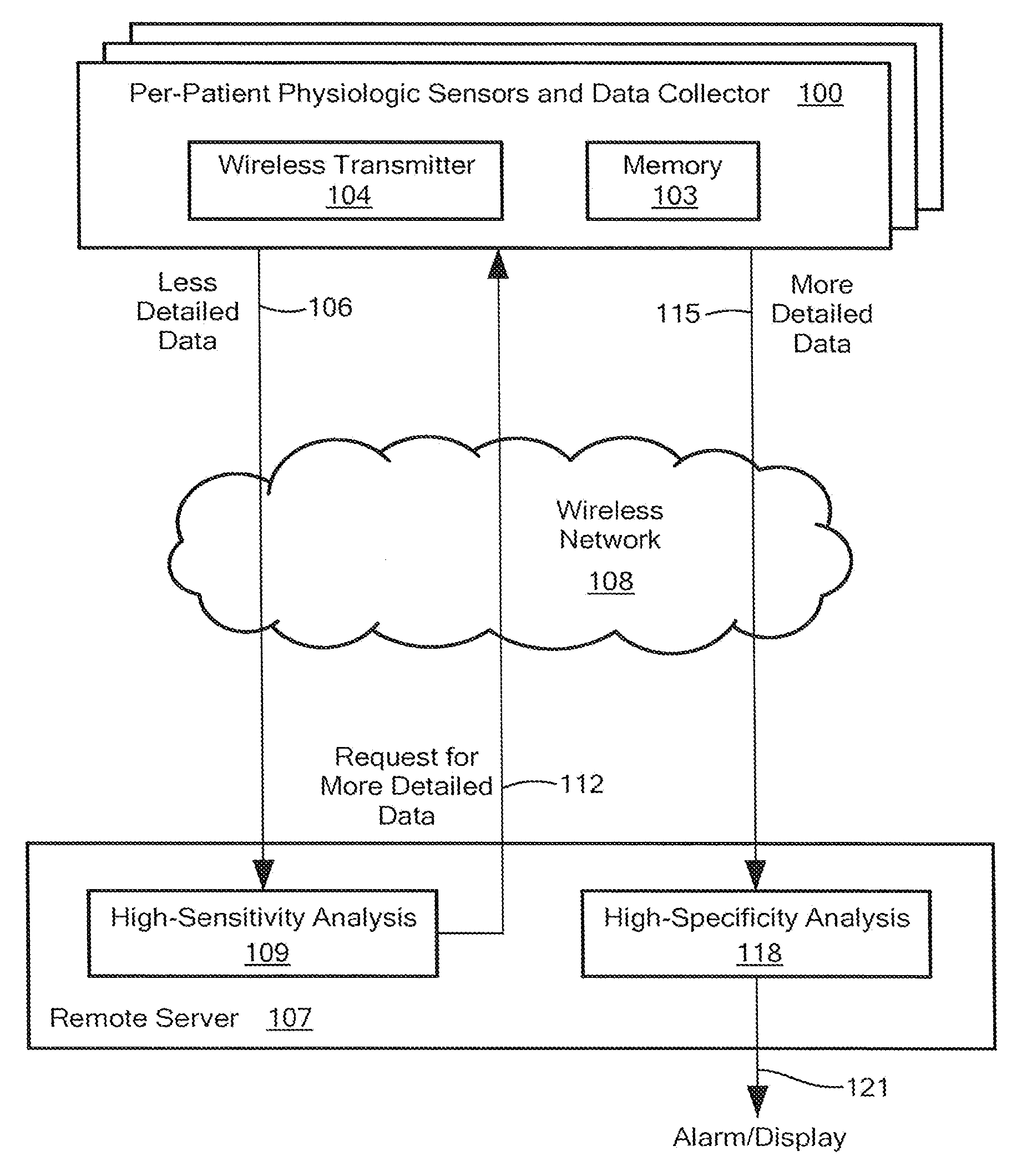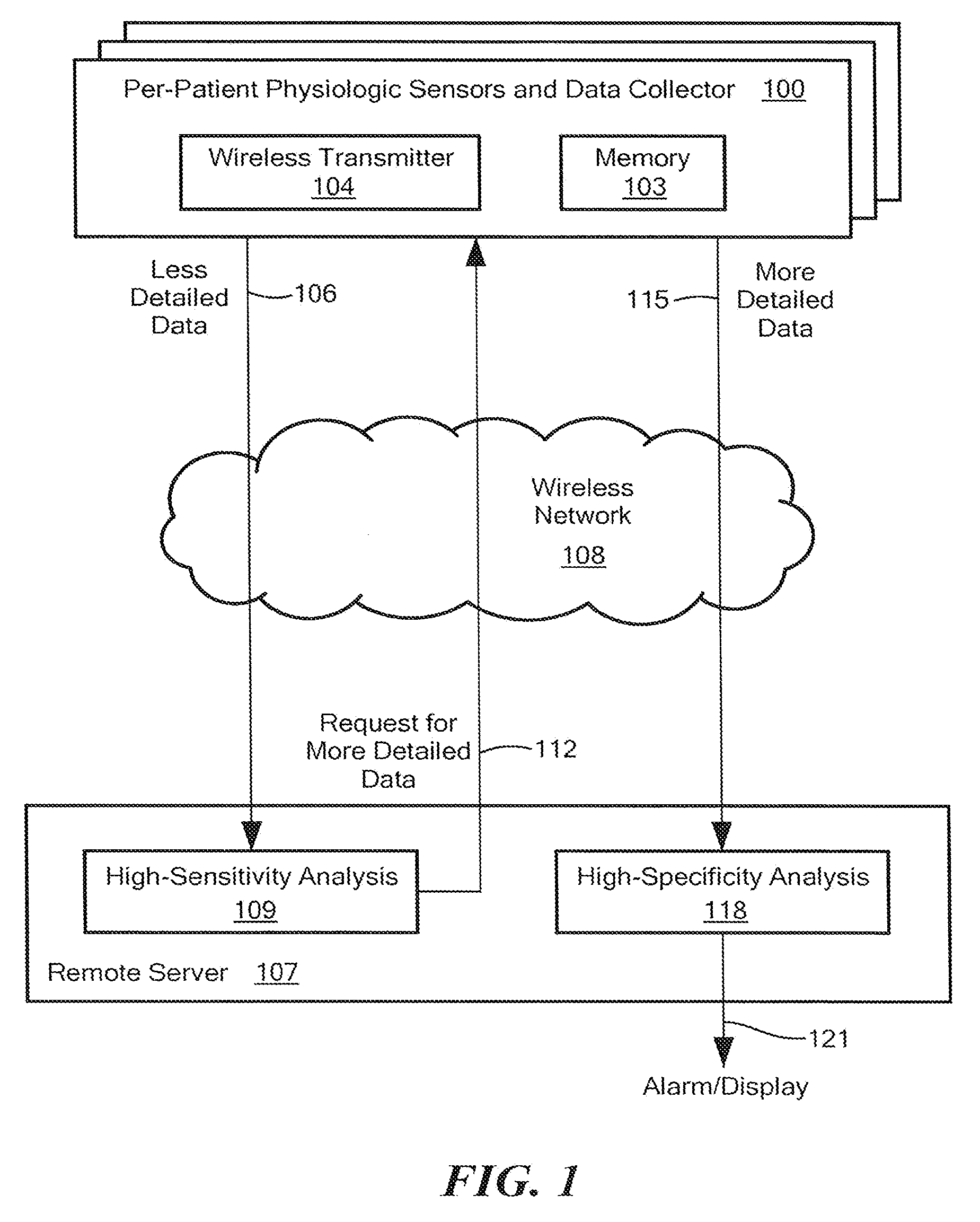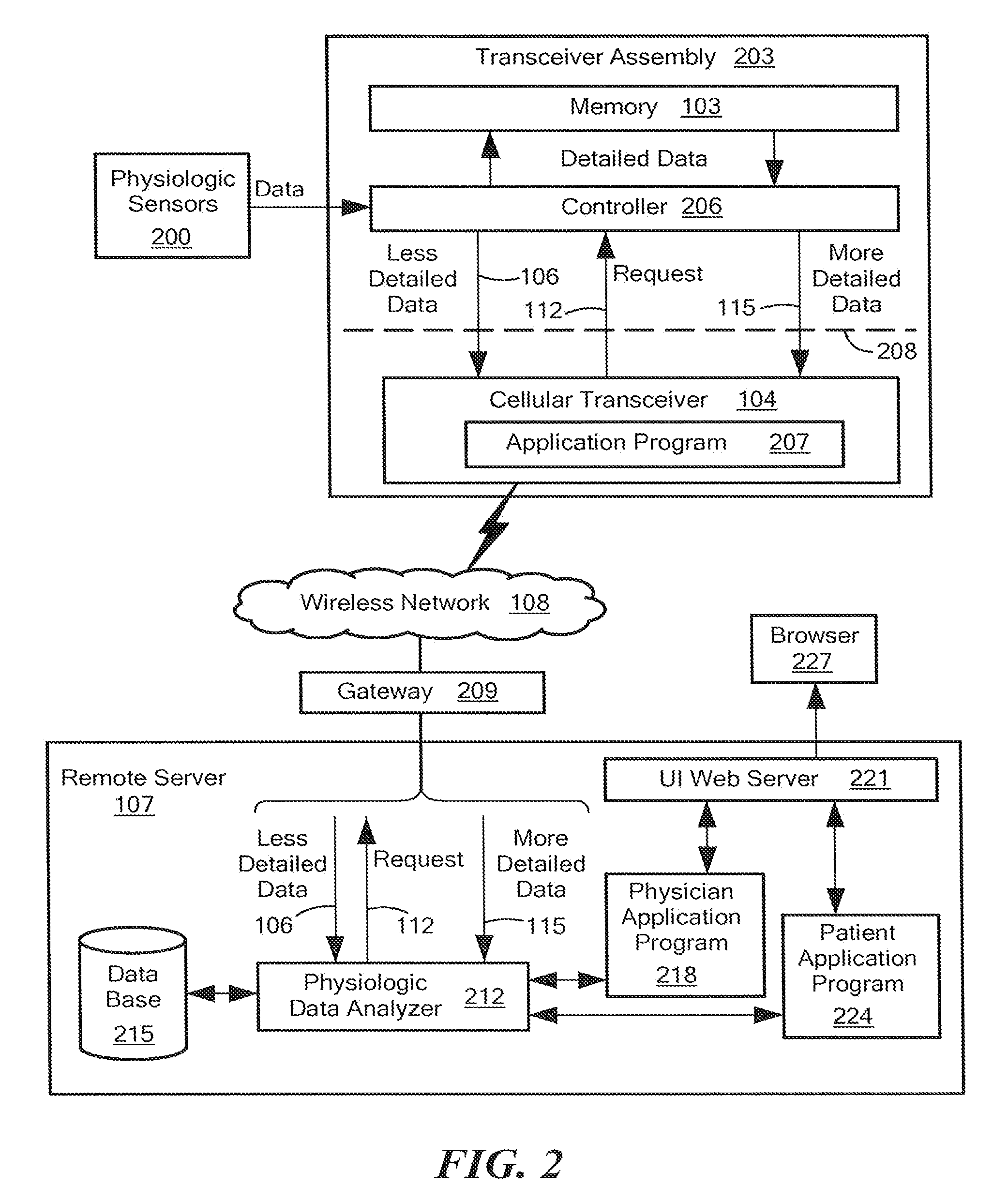Remote health monitoring system
a remote monitoring and physiologic technology, applied in the field of remote physiologic monitoring systems, can solve the problems of inability to use inability to rely on the patient to actuate the device and then send the data, and inability to achieve real-time analysis of patient data, etc., to achieve the effect of reducing the sampling rate, reducing the cost, and reducing the resolution
- Summary
- Abstract
- Description
- Claims
- Application Information
AI Technical Summary
Benefits of technology
Problems solved by technology
Method used
Image
Examples
Embodiment Construction
[0013]An embodiment of the present invention provides a system for remote physiologic monitoring of a body of a patient. The monitoring is performed in association with a remote server. The system includes a plurality of sensors and a transceiver assembly. Each sensor of the plurality of sensors configured to be coupled to the body of the patient to generate respective physiologic data about the body. The transceiver assembly includes a memory, a controller and a wireless transceiver. The transceiver assembly is communicatively coupled to the plurality of sensors. The transceiver assembly is configured to receive the physiologic data from the plurality of sensors. The transceiver assembly is also configured to store the received physiologic data in the memory. The stored data is referred to as “more detailed data.” The transceiver assembly is configured to send a subset of the received physiologic data (referred to as “less detailed data”), via the wireless transceiver, to the remot...
PUM
 Login to View More
Login to View More Abstract
Description
Claims
Application Information
 Login to View More
Login to View More - R&D
- Intellectual Property
- Life Sciences
- Materials
- Tech Scout
- Unparalleled Data Quality
- Higher Quality Content
- 60% Fewer Hallucinations
Browse by: Latest US Patents, China's latest patents, Technical Efficacy Thesaurus, Application Domain, Technology Topic, Popular Technical Reports.
© 2025 PatSnap. All rights reserved.Legal|Privacy policy|Modern Slavery Act Transparency Statement|Sitemap|About US| Contact US: help@patsnap.com



